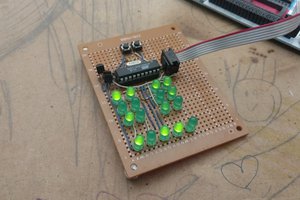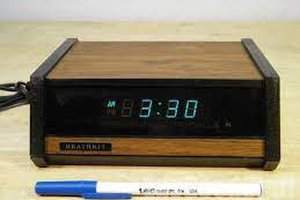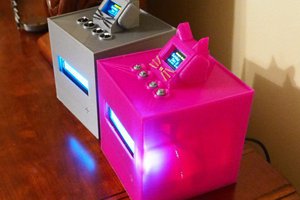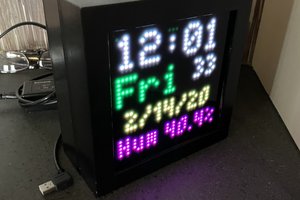The project places two NeoPixel rings and a small 4 digit display behind a black diffuser panel that replaces the glass on a pre-made craft shadow box. Time is set via outreach to the internet and the clock is set.
The outer ring shows minutes and seconds with the seconds sweeping and the minute a single moving blue dot.
The inner ring shows the hour. The digital display show the time and the temperature from the DS3231 RTC alternatively.
Time is automatically adjusted for DST. There is a single pushbutton that 'forces' a reset of the time.
Wifi SSID, Password are configurable, as is the time-zone offset to UTC.
All the components fit in the shadowbox.



 Jeff Wahaus
Jeff Wahaus